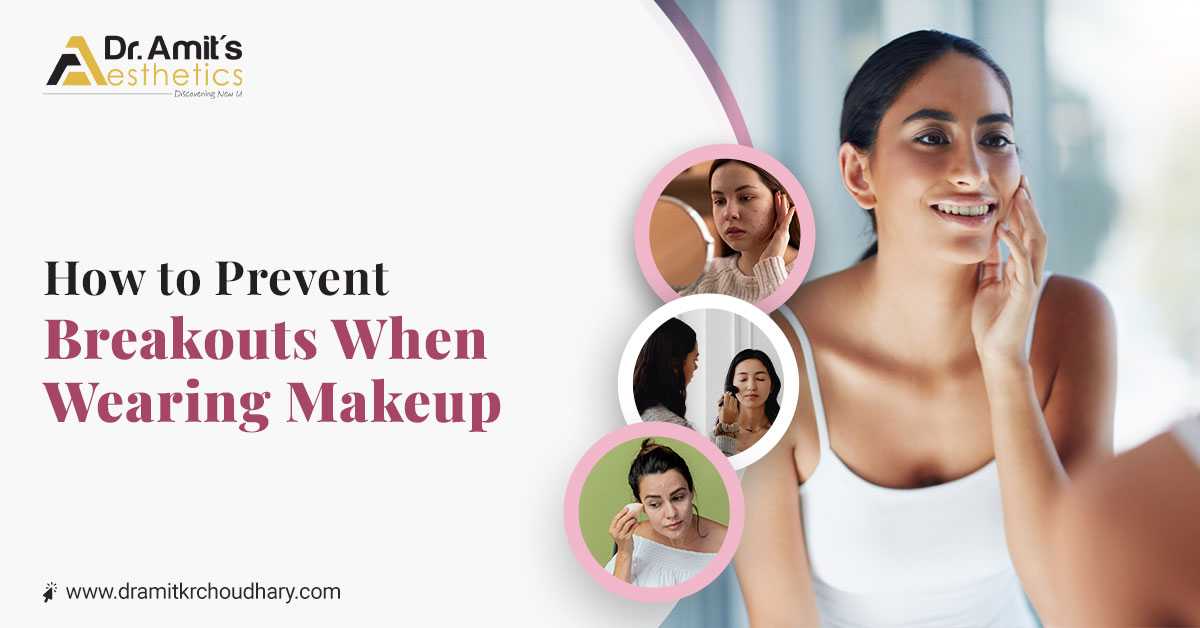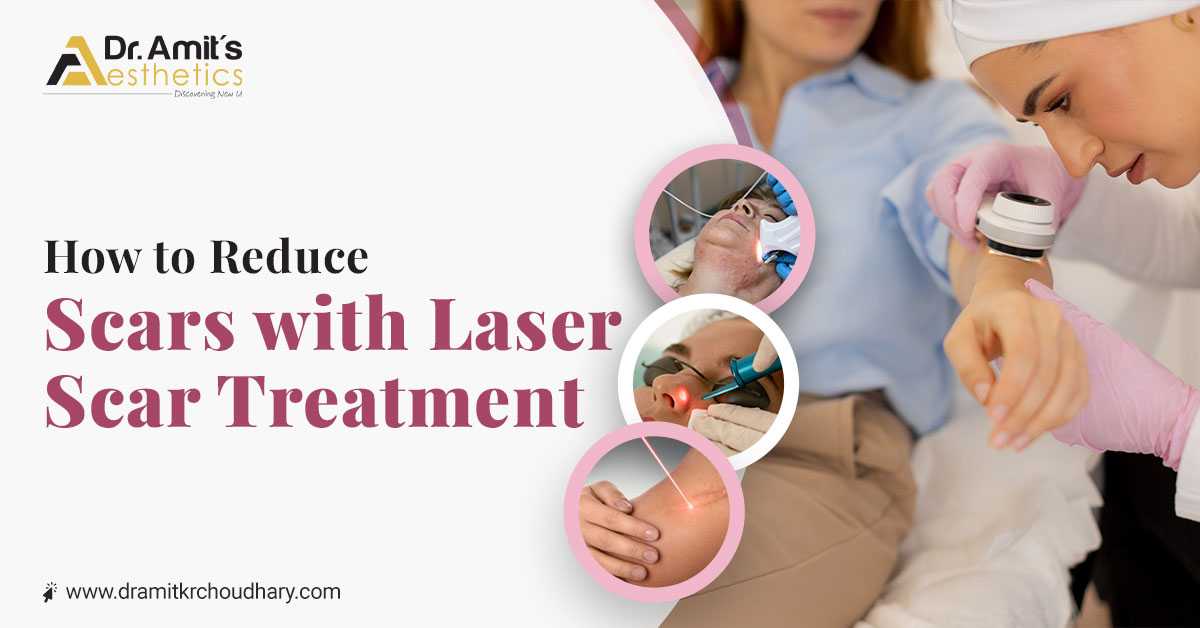While scars are very common, they make us feel really uncomfortable, and we try our best to get rid of them. You're not alone if you have scars. These can result from burns, acne, surgery, or injuries. In order to make scars less obvious, many people wish to fade, flatten, or soften them.
Laser scar therapy is one of the best techniques if you’re looking for scar removal. For effective laser scar treatment in Siliguri, you can reach out to the leading cosmetic surgeon, such as Dr. Amit Kumar Choudhary.
So, this blog will explain laser scar therapy in detail, including what it is, how it works, who it is for, what you can anticipate, recovery, etc. Have a read.
Know What Laser Scar Treatment is
When the dermis, that’s your skin's deeper layer, is harmed, your body repairs itself by producing fibrous tissue, which leaves scars. This tissue usually has a different appearance from the surrounding skin; it may be elevated, depressed, red, black, or textured.
In order to make your scar tissue less noticeable, smoother, and more in line with surrounding skin, laser scar treatment, also known as laser scar revision or laser resurfacing, uses concentrated light energy beams.
But it's crucial that you have reasonable expectations because a laser can enhance a scar's look but cannot totally remove it.
Here’s How the Treatment Works
The following are the main ways that laser treatment heals scars:
Some types of lasers can harm or destroy the outer layer of scars or make microchannels or tunnels in the scar tissue. As an illustration:
In order for your body to repair and replace scar tissue with "normal" or smoother tissue, a fractional ablative laser causes numerous tiny columns of damage in your scar tissue while leaving the surrounding skin intact.
An ablative laser destroys the outer skin layer and warms the underlying dermis so new collagen forms.
After the laser treatment, your body starts producing collagen. And, it starts repairing the tissue. As time passes, this results in skin that is smoother, has a more uniform tone, and features diminished scars.
A lot of scars appear red, pink, or dark due to the presence of irregular blood vessels or pigmentation in the scar tissue. Now, laser and light treatments, such as pulsed-dye lasers or non-ablative lasers, focus on these blood vessels or pigments to help diminish color variations.
Learn About the Types of Lasers & Which One Might Be Right for You
Due to the variations in scars regarding type, depth, color, and location, there is a range of laser types available for people. Below are some commonly used ones:
Ablative lasers: These lasers eliminate the outer skin layer (epidermis) while intensely heating the deeper skin layer (dermis). They often require a longer recovery period but are effective for more profound scars.
Non-ablative or fractional lasers: These lasers preserve more of the skin's surface, creating columns of damage while leaving the surrounding skin unharmed. They generally involve less downtime but might necessitate several treatment sessions.
Pulsed dye lasers / vascular-targeting lasers: These are effective in addressing redness and abnormal blood vessels present in scar tissue.
Your dermatologist will determine the best course of laser treatment type, evaluating your scar's type, age, skin tone, and objectives. You might consult the leading doctor for laser scar treatment in Siliguri City or near you.
When Should You Consider It and Who Makes a Good Candidate?
A strong candidate if:
- Your scar is mature, meaning it has settled and isn't actively healing.
- You would like the scar to become better because it is prominent (raised, depressed, pigmented, red).
- Your expectations are reasonable. (Scars will get better, not go away)
- Overall, your skin is in decent condition, and you can take care of it.
- Considerations that could make it less appropriate if:
- The scar is quite young and is still healing (sometimes waiting helps).
- You use medications that interfere with healing, or you have specific skin disorders.
- Extra care is required if your skin is extremely sensitive to lasers or extremely dark, which increases the risk of pigment alterations.
- You are unable to commit to several sessions, sun protection, or after-care.
What time is ideal for treating?
Even while many scars can be treated years after they appear, early intervention can occasionally produce better outcomes. However, you need to be sure the scar has developed enough to safely withstand therapy.
What you can expect from a standard laser scar treatment procedure
First meeting
A board-certified dermatologist, cosmetic surgeon, or laser specialist will assess your scar, taking into account its type, depth, color, location, skin type, and objectives. They will describe the cost, number of sessions, hazards, and realistic results.
Pre-treatment preparation
Do avoid sunburn and tanning. If skin has recently been tanned, many lasers cannot be utilized.
If your doctor advises you to stop taking specific medications, do so.
Apply topical remedies ahead of time.
The process
- Your skin will be cleansed, numbed with a topical anesthetic, and occasionally sedated for more involved procedures.
- The scar area is exposed to the laser device. You can get a feeling of warmth or cracking.
- The size and kind of scar determine how long it lasts.
You'll probably receive a topical ointment or protective dressing following the procedure.
Recovery & what happens after
- With non-ablative lasers, you can immediately return to most activities with minimal downtime and possibly some redness and swelling.
- More downtime is required for ablative lasers; you may have redness, crusting, and peeling, and the healing process may take days to several weeks.
- Following recovery, the scar's appearance will progressively improve over a period of weeks to months as collagen remodels.
Advantages
Better texture: The scar gets smoother or flatter.
Improved color coordination: Dark or reddish areas go away more quickly.
Symptom relief: A laser can assist with scars that cause pain, itch, or limit movement.
Increased self-confidence: You may feel better about your skin if the scar is less noticeable.
Laser scar treatment can really enhance your comfort, skin texture, and self-confidence if you're concerned about a visible scar. Although it's not magic you must know, you can anticipate smoother skin, less obvious scars, and better color match when done by a qualified practitioner with the right preparation and aftercare. Get expert advice on the best laser skin treatments in Siliguri City or in your location.
Comments (0)




